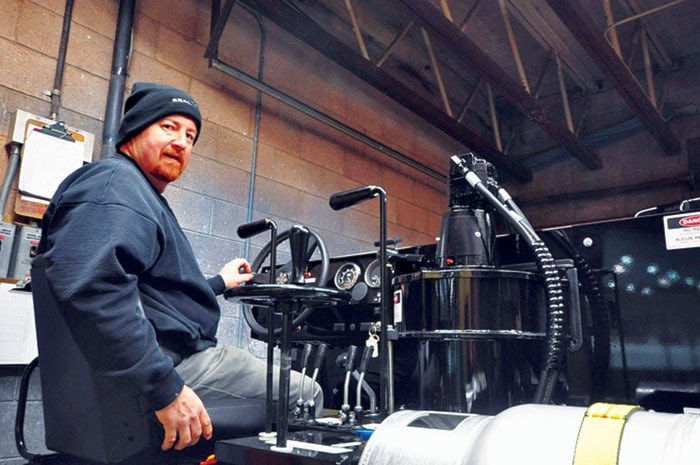Art Harrison
For some people, not knowing what might be causing them unusual physical effects can be worse than actually receiving a clear diagnosis from their doctor.
Such was the case for Todd Wallace, who, in 2012, went through a year of experiencing weakness and an unusual lack of response in his left arm and hand and difficulty performing typically easy tasks, like grasping objects, or struggling when golfing, taking a long time just pulling his ball marker out of his pocket. Just thinking that other people would notice something made him uncomfortable.
He went to his doctor, who ran a series of tests that eliminated the possibility of some serious conditions like stroke or brain tumor but he was still left without any definite answers for what he was going through.
Finally, in the fall of 2013, he was referred to a neurologist in Cranbrook who gave him the diagnosis that he had Parkinson’s disease.
“I obviously knew something was up, I was just relieved to know what it was, that it was something that you can deal with,” Wallace said. “It wasn’t a total surprise as I had researched extensively but it was still emotional news.”
Nearly 100,000 Canadians live with Parkinson’s, including 11,000 British Columbians, with approximately 5,500 new cases each year.
Parkinson’s is one of the most pervasive neurological diseases and yet, to date, researchers and clinicians have found no way to stop, slow, or prevent the disease.
The 50-year-old Salmo resident had already started to try to improve his diet and increase his activity level before he was diagnosed with Parkinson’s but after getting a definite identification of his condition and learning that diet and exercise were positive methods of dealing with the disease gave him a considerable boost of motivation to take his fitness program seriously.
Now, along with monitoring his diet and taking medication, Wallace has embarked upon a program of Nordic pole walking and yoga to deal with the effects of his condition.
“The yoga is huge, the main reason is because of the balance involved and getting the brain trained again on both sides,” he said. “A lot of patients deal with balance issues as they get older and the disease progresses. I’m trying to deal with it now to make it easier later in life.”
In addition to regular medication and a fitness regime, including regular physiotherapy treatments at Kootenay Boundary Regional Hospital, Wallace says that a strong support system of family, friends, his employer, and co-workers are crucial in helping him deal with his condition.
As for advice for anyone who might have recently been diagnosed, or who may be avoiding the doctor because of fear of a diagnosis, Wallace has some advice.
“The first thing I did was go to the Parkinson’s Society Canada website,” he said.
“I phoned and talked to someone, I joined the society right away. I also joined the Trail/Castlegar Parkinson’s Support group, there’s everybody from long-term patients to newly diagnosed. I also started the physio at the hospital too.
“It’s not the end of the world, we’ve dealt with a lot of things. I’m probably in better shape now with Parkinson’s than before. If you get the support and help and exercise you can go on.”
